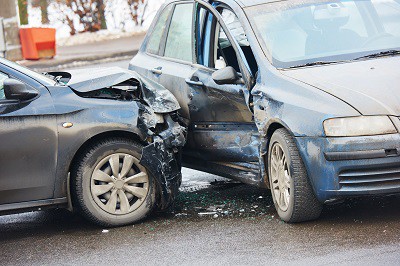Car accidents are among the most common causes of accidental injuries and deaths in the United States, accounting for around 4.4 million injuries and 46,000 deaths each year. While car accidents are often unavoidable due to the actions of other drivers, there are certain measures you can take to greatly reduce your risk of being involved in an accident. Here are some of the most effective ways to minimize your odds of getting into a motor vehicle crash.
Practice Defensive Driving
Many car accidents are the result of recklessness or negligence by motorists who cause crashes with responsible drivers. While you cannot control how other people drive, some accidents can be prevented by defensive driving.
Some general principles of defensive driving include:
- Maintaining a safe speed given the posted limit and road conditions
- Keeping your eyes ahead of you and preparing for unexpected events
- Remaining alert, well-rested, and free of distractions
- Staying prepared for actions and reactions from other motorists, pedestrians, cyclists, etc.
- Consistently watching and respecting others on the road
- Never assume that other drivers will drive safely
- Keep a safe following distance from other vehicles
- Tailor your driving to the weather and road conditions
- Adjust your speed before bends and avoid using your brakes in the middle of a bend
Stay Alert and Aware
Consistently keeping your attention on the road and your surroundings will have two main benefits: you will drive more safely and be more aware of the actions of other drivers or unexpected events, such as a piece of debris falling from another vehicle.
Unfortunately, not all motorists follow this advice. Distracted driving is a major problem in the United States—more than 30 percent of U.S. drivers admitted to recently texting and driving. Cell phone use is one of the most common types of distracted driving, but it can take many forms. These common distractions generally fall into one of three categories:
- Visual – Anything that takes your eyes off the road, such as looking at a cell phone, GPS, billboards, or checking on your kids in the rear-view mirror.
- Manual – Distractions that involve taking your hands off the wheel, such as eating, drinking, and fiddling with temperature controls or the stereo.
- Cognitive – Mental distractions, meaning anything that causes you to lose mental focus on your driving.
By avoiding these and other common distractions and consistently practicing defensive driving, you can significantly reduce your risk of getting into a preventable distracted driving accident.
Never Drive Under the Influence
The dangers of drunk driving are well-known at this point, but many people still choose to get behind the wheel while “buzzed.” There is a common misconception that a couple of drinks will not affect your driving, but the truth is, any amount of alcohol can cause impairment. It is best to avoid driving if you have consumed enough alcohol to feel any effects, even if you do not consider yourself drunk. In many cases, that “buzzed” feeling means that you are over the legal limit to drive.
If you’re going out and know you’ll be consuming alcohol, plan accordingly. Select a designated driver, take public transit, use a rideshare service like Lyft or Uber, or call a taxi.
Avoid Speeding
Speeding has consistently been one of the most common contributing factors in car accidents, especially more serious crashes. According to the National Highway Traffic Safety Administration (NHTSA), speeding caused the deaths of 11,258 people in traffic accidents in 2020. In the two decades preceding that year, speeding was involved in approximately one-third of all car accident deaths.
Anyone who drives knows just how common speeding is. Many drivers underestimate the dangers of speeding. In addition to following posted speed limits, you should always be mindful of your speed based on road conditions. For example, driving at the posted speed limit on an icy road can be extremely dangerous. You may want to reduce your speed by as much as a third on wet roads and even a half when it’s snowing.
Make Sure Your Vehicle Is Well-Maintained
Safe driving doesn’t begin when you start the ignition and hit the road. A regular maintenance routine is a key, yet often overlooked form of safe driving. For example, a driver who fails to replace their worn-down brakes could cause an accident when their brakes fail them on the road. In addition to keeping you safe on the road, regular car maintenance can help save you money by preventing serious problems that require expensive repairs by professional mechanics.
Make sure to keep up with maintenance on these and other parts to reduce your risk of getting into a preventable accident:
- Keep your headlights clean and check them regularly
- Make sure your tires have strong tread and replace as needed
- Keep your tires consistently inflated to manufacturer-recommended levels
- Check your brakes, brake pads, and brake fluid regularly
- Regularly inspect your wiper blades and make sure they’re working correctly; replace worn-out blades promptly
- Check your fluid levels regularly and top off as needed
- Get your oil changed per the recommended schedule, and don’t forget to also replace the oil filter as needed
